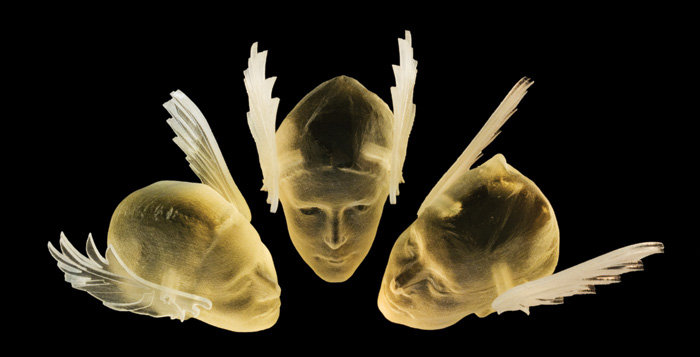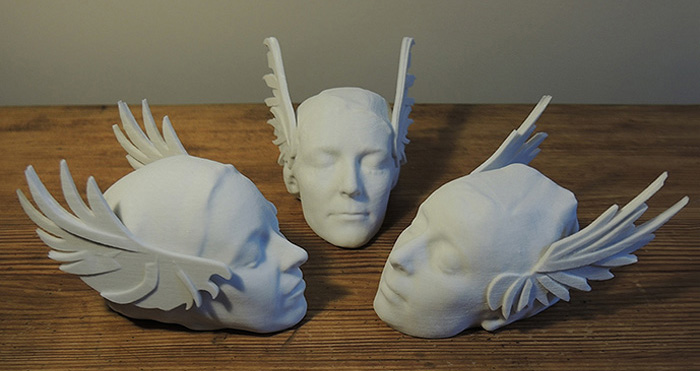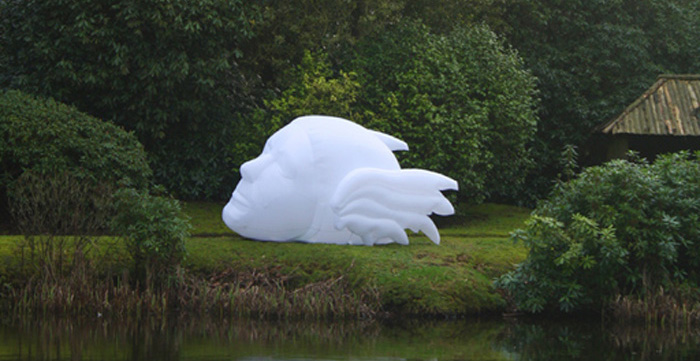UK-based art collective Brass Art likes to deal with the concept of doubles, asking people experiencing their art to question their own identities as the distinctions between the real and the virtual fade. A description of their work, as listed on a Vimeo video, is as follows:
Much of their practice explores ontological questions, using mirroring, doubling and the alter ego to ask what it means ‘to be’, as well as exploring the liminal and heterotopic; namely slippages between time and space, the real and the virtual. Their playful questioning of the thresholds of presence and absence, self and other-self, the real and the imagined are manifested through methods including improvised performance, and through the recurring motif of the shadow.
Naturally, then, their practice has led them to 3D scanning and 3D printing, utilizing advancements in reproduction to push their ontological investigations even further. Made up of Chara Lewis, Kristin Mojsiewicz and Anneké Pettican, Brass Art uses medical-grade 3D scanners, mainly, to scan their own faces. The artists captured highly detailed scans of their own heads, fixed wings to the sides to represent Hypnos, the god of sleep, and then used their likenesses for a variety of art installations.
“Untitled (Messengers) 2010”, the first instance in the Hypnos series, saw the artists print out their likenesses in resin through stereolithography. Since that first piece, the women have played with reproducing themselves as Hypnos in various forms.
With “The Messengers No. 2”, the artists again used SLA to create a similar set of sculptures, only, this time, they employed epoxy to render their forms a pristine white. For other, much larger projects, though, the artists had to abandon 3D printing altogether.
In “Trine Messenger”, the artists took one of the models used for their 3D-printed work and reproduced it as a 3 metre, inflatable head made from ripstop nylon and plastic with the help of product design studio FormFoundry. The inflated head sat beside the Golden Brook in Tatton Park in Cheshire, England for the park’s Biennial. The artists describe the project as a means of conjuring “flights of fancy” in passersby, saying, “The arrival of the Trine Messenger on the edge of the Golden Brook recasts the observer in miniature, inverting boundary and rule whilst confronting this interface between the natural, the human and the imagination.”
Brass Art, The Air which Held Them, 2013, © the artists from Contemporary Art Society on Vimeo.
Lewis, Mojsiewicz and Pettican took the concept one step further in their most recent collaboration, “The Air which Held Them”. This time, all three artists’ heads were recreated as giant inflatables and placed in Christ Church, Macclesfield. The goal this time was, in addition to inducing similar feelings of tininess in viewers, to inflate and deflate the heads to “give the impression of an animated presence in a space that is still, even frozen in time.” The reason for choosing such public spaces for their art? The artists explain that, “By editing and inserting themselves into a variety of spaces they use performative play as a means to examine the gap between public and private experience.”
Though the inflated heads of the artists may indicate a departure from 3D printing, their portfolio demonstrates that they’ve been using the technology for some time, including other 3DP technologies like selective laser sintering. My guess is that the playful sculptors will make a return to the technology soon.
Source: Brass Art





